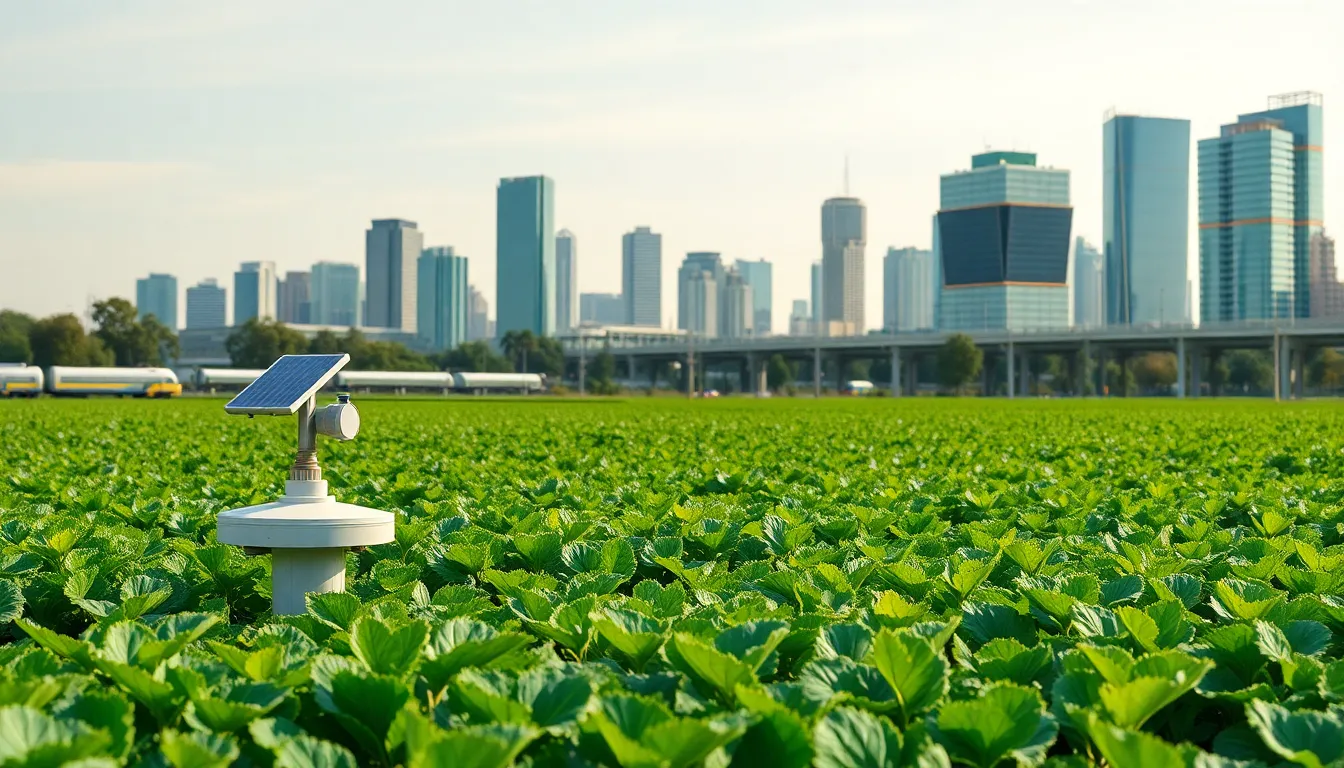In a world where technology and nature are often at odds, ecosystem technology emerges as the superhero we didn’t know we needed. Imagine a realm where innovation meets sustainability, creating solutions that not only boost productivity but also nurture the environment. It’s like having your cake and eating it too—only this cake helps save the planet!
Ecosystem technology isn’t just a buzzword; it’s a game changer. From smart farming to green energy, it’s reshaping how industries operate while keeping Mother Earth happy. So, if you’ve ever wondered how to make your tech-savvy heart flutter while saving the world, buckle up. This journey into the intersection of technology and ecology promises to be as enlightening as it is entertaining. Get ready to dive into the wonders of ecosystem technology and discover how it’s paving the way for a brighter, greener future.
Table of Contents
ToggleOverview of Ecosystem Technology
Ecosystem technology integrates various sustainable practices with advanced innovations. This approach enhances productivity while prioritizing environmental health.
Definition and Importance
Ecosystem technology refers to a framework that connects technological advancements with ecological sustainability. It plays a critical role in addressing environmental challenges by promoting renewable resources and reducing waste. Businesses adopt this technology to boost efficiency, foster innovation, and meet compliance with regulatory standards. This integration supports not only economic growth but also the preservation of natural resources. According to the World Economic Forum, investments in sustainable technology can lead to a $10 trillion market opportunity by 2030.
Key Components
Several key components define ecosystem technology. Renewable energy sources like solar panels and wind turbines exemplify its foundation, offering cleaner alternatives to fossil fuels. Smart sensors and IoT devices contribute to improved monitoring and management of resources. Data analytics enables organizations to optimize operations and make informed decisions. Sustainable materials like biodegradable plastics support waste reduction efforts. Collaborative platforms enhance communication among stakeholders, promoting shared sustainability goals. Each component strengthens the ecosystem, driving innovation while respecting environmental boundaries.
Applications of Ecosystem Technology

Ecosystem technology finds numerous applications across various sectors, enhancing environmental sustainability while enabling innovation. Its impact is particularly notable in agriculture and urban environments.
Agriculture and Food Systems
Ecosystem technology transforms agriculture by utilizing smart farming techniques. Sensors and IoT devices monitor soil health, crop conditions, and water use, optimizing resource management. Such practices enhance productivity while minimizing waste. Innovative data analytics tools support decision-making, helping farmers increase yields sustainably. The integration of renewable energy systems, like solar irrigation pumps, reduces dependency on fossil fuels. According to the Food and Agriculture Organization, these advances can elevate food production efficiency by up to 30% while ensuring environmental stewardship.
Urban Planning and Smart Cities
In urban planning, ecosystem technology plays a crucial role in designing smart cities. Advanced data analytics and IoT solutions inform infrastructure development, leading to improved energy efficiency and lower emissions. Green buildings, integrated with renewable energy sources, consume less power and contribute to reduced urban heat. Smart transportation systems optimize traffic flow, enhancing mobility and lowering pollution levels. The United Nations reports that sustainable urban systems could lead to a 50% reduction in greenhouse gas emissions by 2030. Collaborative platforms engage stakeholders, making urban planning more inclusive and effective.
Challenges in Implementing Ecosystem Technology
Implementing ecosystem technology faces several challenges that can hinder its effectiveness across various sectors.
Environmental Impacts
Ecosystem technology aims to promote sustainability, yet certain environmental impacts arise during its implementation. Resource extraction can damage ecosystems, disrupting habitats and reducing biodiversity. Additionally, technologies such as solar panels and wind turbines require significant land use; thus, careful site selection becomes crucial. Unintended consequences may also stem from waste generated during production processes. The Food and Agriculture Organization emphasizes the importance of lifecycle assessments to minimize negative effects. Addressing these challenges ensures effective alignment between technology implementation and ecological preservation.
Technical Barriers
Technical barriers present significant hurdles in deploying ecosystem technology. Integration of complex systems, such as IoT devices and data analytics, often encounters compatibility issues among diverse technologies. A lack of standardized protocols can lead to inefficient communication between devices, stalling project progression. Furthermore, workforce skills may not align with the demands of advanced technologies. Training and education create pathways for adaptation, but such initiatives require investment and time. As businesses strive for seamless integration, overcoming these technical challenges becomes essential for maximizing the potential of ecosystem technology.
Future Trends in Ecosystem Technology
Ecosystem technology is poised for significant advancement, blending innovation with sustainability. Key shifts will emerge across various sectors, enhancing efficiency and environmental stewardship.
Innovations on the Horizon
Artificial intelligence and machine learning drive exciting developments in ecosystem technology. Smart agriculture tools use AI to predict crop yields and automate irrigation, fostering efficiency and resource conservation. Additionally, emerging biodegradable materials present sustainable alternatives to traditional packaging, impacting waste reduction positively. Integration of blockchain technology improves transparency in supply chains, promoting responsible sourcing. These innovations can reshape industries, encouraging sustainable practices and reducing environmental footprints.
Policy and Regulatory Changes
As recognition of ecosystem technology’s importance grows, shifts in policy and regulation will shape its future. Governments are likely to implement stricter sustainability standards, requiring businesses to adopt environmentally friendly practices. Enhanced funding for renewable energy projects will support clean technology initiatives, ensuring compliance with international climate agreements. Collaborative efforts among stakeholders can lead to standardized protocols, facilitating interoperability among different technologies. Such changes are essential for overcoming existing barriers and promoting widespread adoption.
Ecosystem technology stands at the forefront of a sustainable revolution. Its ability to merge innovation with ecological responsibility creates a powerful tool for industries aiming to enhance productivity while protecting the environment. As businesses increasingly adopt these technologies, they not only drive economic growth but also contribute to the preservation of vital natural resources.
Looking to the future, the potential for advancements in this field remains vast. With ongoing innovations and collaborative efforts, ecosystem technology promises to reshape industries and foster a more sustainable world. Embracing this transformative approach is crucial for addressing current environmental challenges and ensuring a healthier planet for generations to come.




